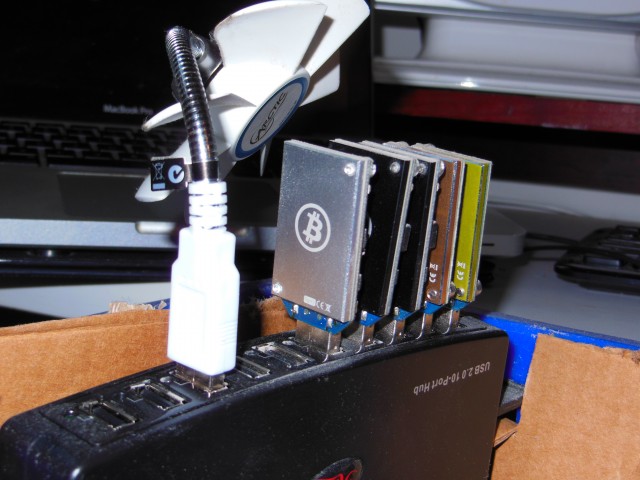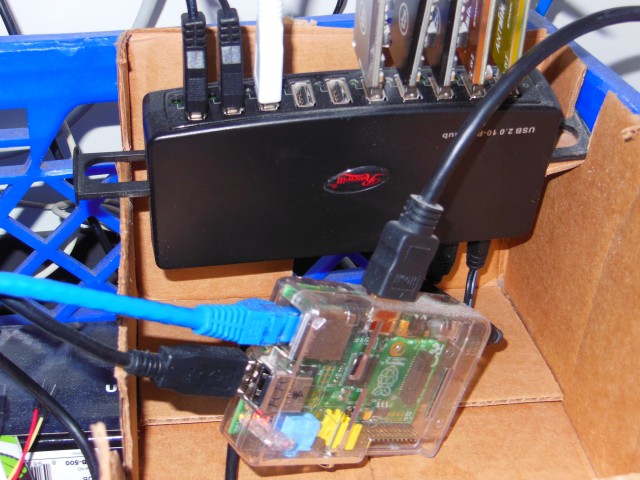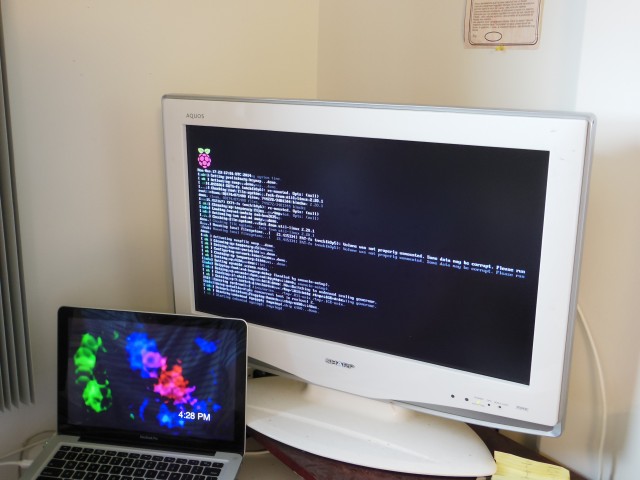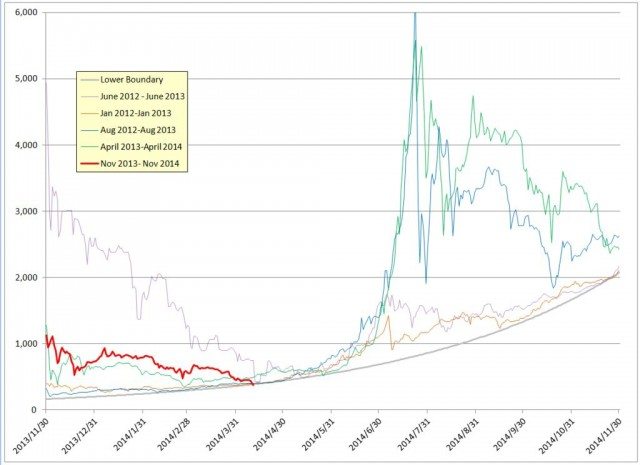Nothing in the tech world confuses us as much as Bitcoin it seems. What we do know about it is that it’s volatile and it can be worth a ton of money, but we hardly understand where it comes from, who invented it apparently, or what it is past being a crypto-currency- even that term confuses many. Perhaps the main reason Bitcoin baffles us so is it’s infinite nature- it can develop into so many structures and utilities that it’s hard to describe it as anyone thing, but hopefully this article clears up some of the confusion for you.
Bitcoin has been making headlines quite a bit lately. The
IRS recently ruled that Bitcoin is not a currency but an asset, one that must be taxed on its gains.
Billionaire Warren Buffett dismissed the entire concept of Bitcoin in a television interview as “a mirage,” an opinion that fired up venture capitalist and perhaps Bitcoin’s number one fan Marc Andreessen to group those like Buffett as “old white men crapping on new technology they don’t understand.” After getting hammered by a series of attacks the past few months,
Bitcoin fell from its thousand dollar value and currently sits around $360 with a market cap of just over $4.7 billion according to
CoinMarketCap. Whatever side of the love/hate debate over Bitcoin you might find yourself on, we could all use a little more understanding over a subject that most of us are only beginning to understand. If you have ever been curious about Bitcoin, then you’ll definitely want to hear this student’s story.
Geoffrey Welborn is a political science major at the University of California, San Diego. A self taught Bitcoin enthusiast, Geoffrey has been mining Bitcoin from his on-campus apartment since January and is also a co-founder of a Bitcoin ATM startup. As a young entrepreneur in the crypto-currency industry, I had the pleasure of visiting Geoffrey on campus where I picked his brain on everything about Bitcoin to explain it in a way that anyone can understand.
I met Geoffrey at his on-campus apartment on the Monday of finals week at his university. With most students cooped up inside cramming for their exams, the atmosphere on campus was quiet and peaceful. Sitting with him in his cozy single, I got the chance to examine the neat bundle of wires, the whirring fan, USB chips, and monitors that made up his Bitcoin rig. With my curiosity immediately sparked, I began to fire away with my questions.
I first wanted Geoffrey to explain in the simplest terms to me something that seems to confuse pretty much everyone when it comes to talking about digital currencies- what is Bitcoin?
Geoffrey explained,
“With the advent of the internet in the past twenty years, Bitcoin is the first serious attempt at making a digital currency that isn’t exposed to counterfeit. The first thought that comes to mind when people think digital internet currency is that it is prone to a digital copy-paste. A lot of people think, “How do I know that’s my money when I can’t hold it?”
“So it’s basically a decentralized ledger that is stored in many places, called nodes, collecting and storing the data of all these transactions, known as a blockchain, of this payment network so everything is recorded when you send and receive through it; it’s not as anonymous as people think. It’s actually more relevant to email, it’s pseudonymous. You have an identity but that identity can’t always be traced back to the person unless they want to sell their Bitcoins, in which case a regulatory environment is developing to combat criminals. Bitcoin is a network, a protocol, it’s a currency, it’s an asset, it’s not quite clear yet but it’s an exciting piece of technology at the end of the day.”
What is the greatest utility in Bitcoin for the average consumer?
“Most people right now see at it as a speculative asset that could be used in many different ways. I personally see it in a ‘commodity’ phase where it could one day stabilize and gain ‘currency’ status. If it achieves a much higher market cap, hundreds of billions, it will really be able to be utilized as the efficient payment network it is.”
The Bitcoin Rig
Following the mess of wires that ran from the monitors on his desk to the crate that held his rig below, I asked him to explain why and how he learned to build his Bitcoin rig.
“This past November, Bitcoin got a lot more news attention and I thought I’d want to get into it. I like information technology and I like where this is headed, so I started in mid-December experimenting with mining on my MacBook Pro and that was interesting.”
While taking a supply chain and operations management course at the university, he became very interested in the concept of utilizing spare computing power to start mining Bitcoin. Geoffrey explained, “Right now I see Bitcoin as the leader; it’s almost guaranteed at this point, just as the first mover principle and for it’s ability to be changed if absolutely needed.” Beginning his research, “I looked up a few tutorials online. A lot are handy and simple put-it-together and it was all fairly inclusive. “Building a Bitcoin miner with a Raspberry Pi” yields a decent amount of Google searches.”
When he broke it down, the Bitcoin rig was really quite simple. You can purchase everything on Amazon and assemble it yourself without calling the Geek Squad. The hardest part is setting up the program on your computer, though if you are brave and savvy enough to really get into Bitcoin mining, you’ll find it a labor of love.
Here is the rough list of the pieces you need to build a rig along with the prices:
If you aren’t familiar with the Raspberry Pi, it’s the world’s cheapest production computer and it’s about the size of a deck of cards- a perfect, cheap, extra brain to manage your mining 24/7. The most expensive components of the rig are the block erupters. Simply put, as Geoffrey explained, block erupters are “computer chips specialized to do one thing and one thing only- mine Bitcoins.” Virtually a “plug and mine” USB stick, block erupters vary in price depending on their mining speed.
To give you a sense of reference, Geoffrey’s rig only contains five block erupters- two 1.6 Gh/s and three .336 Gh/s block erupters, all of which were purchased for between $30-$50 which is considered on the lower end. Now, it would make sense that the more Gigahashes, the units that basically measure mining speed, you have, the faster you can mine; they are also more expensive.
In total, your very own rig to start mining Bitcoin won’t cost more than a few hundred dollars. One point Geoffrey highlighted that anyone buying should keep in mind is the speed at which Bitcoin mining technology advances. You can order one block erupter one month and find that the next month, there could literally be a new chip on the market that is twice as fast and half the price; for you hungry entrepreneurs out there, the Bitcoin mining technology industry is an exciting and fast-paced industry in itself.
Once your components are set, the hardest part is installing and running the program to manage your mining. This task will take a fair amount of research and an understanding of some computer science, though I was informed that some Google searches, patience, and determination will land you success.
Working with your rig, you’ll also need a variety of online platforms to help mine, track, store, and trade your Bitcoins. The three big names to look out for are
BitMinter,
Coinbase, and
Blockchain.
“With BitMinter, they allow me to monitor, store and send my earnings made through the mining pool.”
When mining, you need to be part of a mining pool, which is a community of miners that informs you when blocks are found; by yourself, you’ll basically never find a block to mine. Another resource to check out is
ghash.io, which is regarded as the world’s largest mining pool.
When looking to store, trade, buy and sell Bitcoin, Coinbase is perhaps the number one platform out there.
“Coinbase acts as a wallet to some extent, but Coinbase has nearly 98% of their Bitcoins in cold storage so they aren’t connected to the internet. It’s another added level of security. I trust them, I have a two-factor verification, I can send you Bitcoin as easy as sending an email, and they are also venture capital backed.”
If you are also looking for diversity, ease of use, and another place to stash your Bitcoins, Blockchain is a wallet platform that also tracks other Bitcoin transactions.
“I use blockchain as another wallet. I use it to show people starting out because it’s really easy to use.”
The real question in all this is how much that little rig can make. Geoffrey broke it down for me by comparison. Since starting in mid-January and working the rig at maximum capacity, Geoffrey explained that, “On average every five hours, I make about 20-30 cents worth of Bitcoin, depending on the market price.”
This may not sound very much to most, but keep in mind that his modest rig represents the most affordable hardware suitable for a hobby; the investment, return and risk involved are the lowest possible.
If are want to spend money to make money, on the more expensive ends, for example, you can buy mining hardware for tens of thousands of dollars. At
KnCMiner, a mining hardware company, you can purchase a Bitcoin miner for just under $10,000; at mining speeds over 3000 Gh/s, excluding the amount of your electricity bill, Geoffrey calculates that you can mine about $222 worth of Bitcoin a day.
“It’s all about scales of economy. When you buy the Bitcoin machinery, they have to give you more. ROI (return on investment) is more achievable. If you were going all in, you would get one of those.”
The Future of Bitcoin
So why should anyone mine Bitcoin? To anyone easily lost in computer jargon, it’s certainly a challenging task. It all falls on the potential of Bitcoin. As Geoffrey explained to me, we have only seen the very beginning of Bitcoin’s rise- if there is to be one at all- though Bitcoin’s recent volatility hasn’t helped that much.
Geoffrey explained that, “It’s a cat and mouse game with all the security flaws.” Just like the many recent credit card hacks of major department stores, Bitcoin platforms have also fallen victim to cyber attacks. Trading platform Mt. Gox was one such victim in which a security flaw involving digital receipt-fraud and the unethical business practices of Mt. Gox’s owner were exploited, resulting in bankruptcy and the loss of Bitcoins for many who used the site. While all other platforms adapted to prevent such a flaw after the fall of Mt. Gox, the Bitcoin market ultimately took a beating where the speculation on Bitcoin’s security became the subject of doubt; a concept frequently seen when the stock market crashes on Wall Street.
The loss of hope in Bitcoin still doesn’t deter those who are passionate about seeing it’s success, like Geoffrey, or those who have invested millions in it, like Marc Andreessen and Richard Branson. To them, Bitcoin still has a bright future, but for us, we can at least understand what needs to happen in order for Bitcoin to become something that will leave us kicking ourselves years from now for not investing earlier. Geoffrey explained to me why we might regret not buying Bitcoin sooner:
“On the BitcoinMarket sub-reddit, there’s been consistent talk of a logarithmic bubble trend over several years of price movements. If that trend stays consistent with this summer, it will be the biggest rise in price yet. Following this line of thought, I tend to agree with Barry Silbert of the Bitcoin Investment Trust & the Winklevoss twins. Large valuations that have been speculation are obviously exposed to internal bias, so who really knows. If millions of people begin to take Bitcoin seriously, or Wall Street creates financial instruments out of it, then it could re-enter a long-term trend. On the other hand, history is filled with technology failures as well as success stories.
As reported by
newsBTC, SecondMarket Chief Executive Barry Silbert predicts another Bitcoin bubble to burst, speculating that as close to this summer to the end of this year, we may see Bitcoin reach a four digit price range again. And yes, those are the same Winklevoss twins, Cameron and Tyler, who milked Facebook’s Mark Zuckerburg in a lawsuit for $140 million in 2004 and became internet entrepreneurs, venture capitalists, and heavy Bitcoin investors;
they speculate a bright future for Bitcoin, seeing its market cap explode to one hundred times what it is now to reach $400 billion, meaning that each Bitcoin could be worth upwards of $40,000 dollars.
With Bitcoin currently sitting around $360, for it to reach several thousand by the end of this year is the point of an exciting opportunity, but also a miracle as it seems. The big question is if and how Bitcoin will become popular among both consumers and merchants.
“The future of Bitcoin is really bright, especially in America. I heard a really great quote on a lesson that if China bans something, the U.S. should embrace it. China put out some sketchy releases involving their banks banning Bitcoins, but now it seems that’s phasing out. With the U.S., especially with these exchanges coming out in the future, a lot of startups are really pushing hard.”
While Bitcoin can indeed still be wildly successful, one should never downplay the risk involved in speculating and investing in Bitcoin. An entrepreneur, out of anyone else, knows this lesson all too well as the two industries are nearly one in the same.
“In both scenarios you have the risk of losing everything. I’m drawing a lot of similarities, but the sky is the limit really, until government intervention comes along of course.”
To the business minded, Bitcoin is simply an exciting investment opportunity, plain and simple, but the looming question is, “How much do you believe in Bitcoin?”




